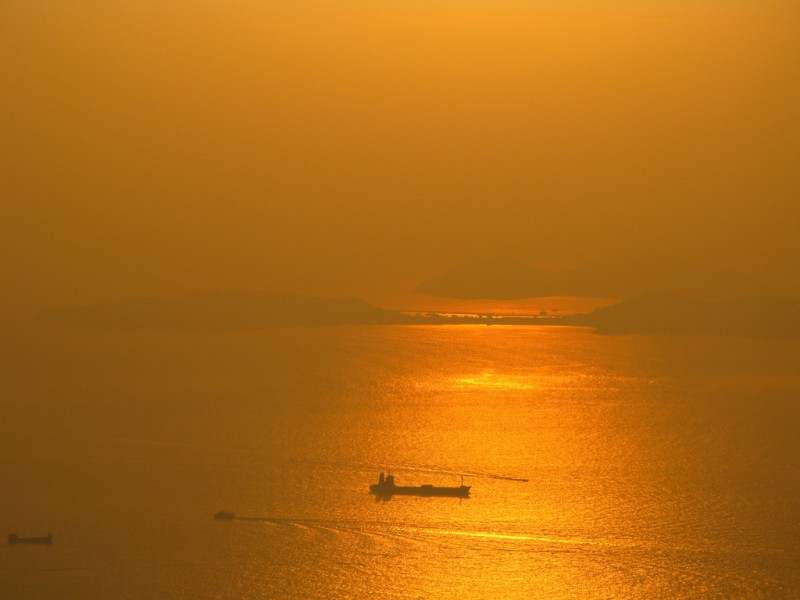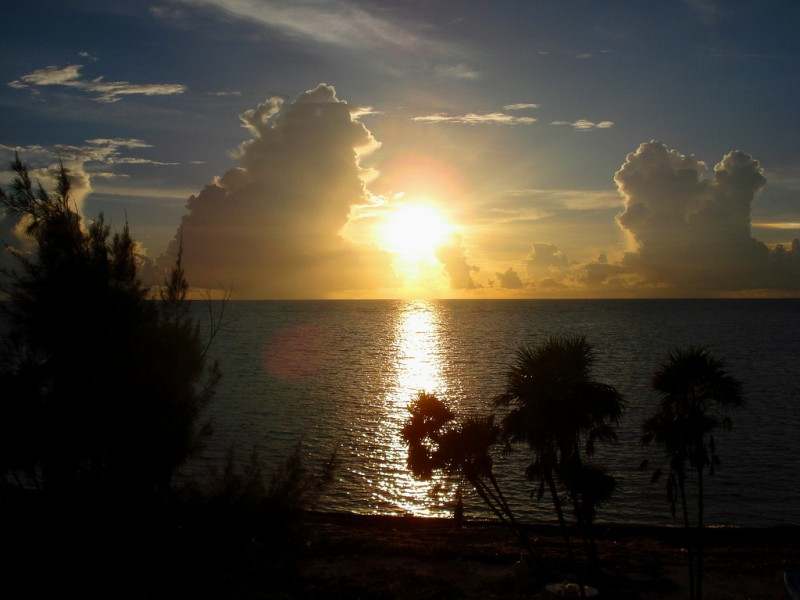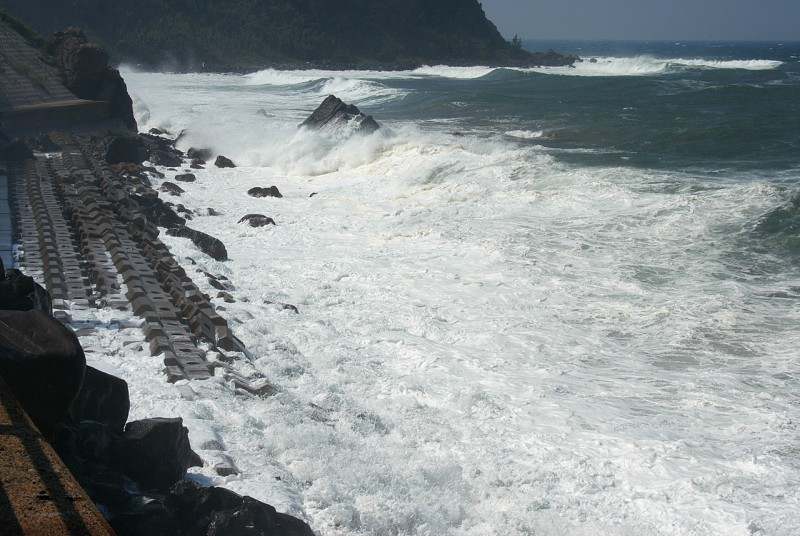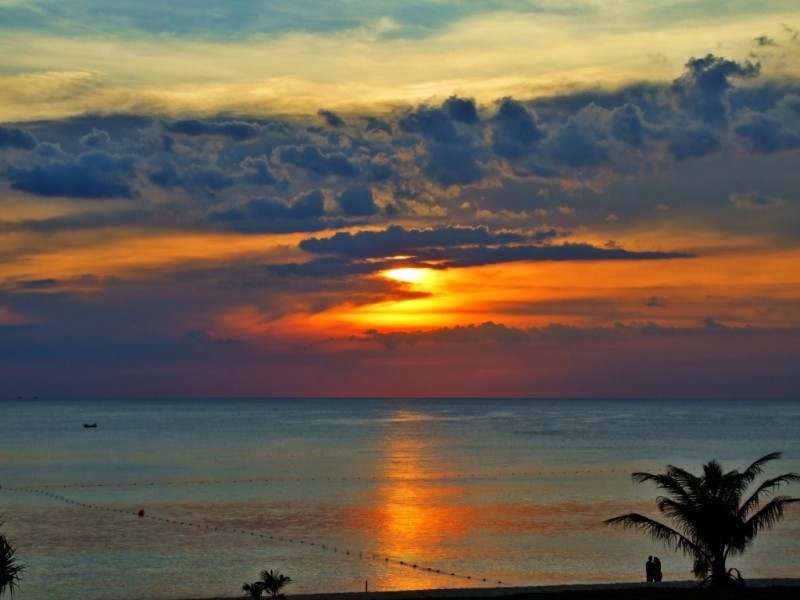I’m listening to the sounds of the sea on my player. They are so charming, so ancient; patient and at the same time dangerous. Those same waters were here long before us. They know the history of all of our past generations. Our ancient ancestors admired the seas and gave them gifts — they believed in sea gods and made sacrifices. Seas have played a great role in the history of many cultures, and others were opened by explorers several centuries ago. The names of the seas have their own histories. I hope you will enjoy this small overview of the names of some of the biggest seas in the world.
Arabian Sea
The Arabian sea received its name because of its geographical location. This region of the Indian Ocean is bound by India in the east, Pakistan and Iran on the north, and the Arabian Peninsula on the west. Since ancient times, many ocean trade routes have been crossing the Arabian Sea, connecting the Near East with Africa, India, Southeast Asia and China. Big caravans traveled to the sea, struggling days and nights through the deserts and having to fight against nature and robbers. Nowadays the Arabian sea is part of the shipping route between Europe and India via the Suez Canal, but the mystery of the sea will always remain with us in the tales of Arabian Nights.
Photo by Sarah_Ackerman

Photo by musuf (back in action)

Photo by klangone

South China Sea
South China sea is part of the Pacific Ocean and one of the biggest seas on the planet. Though surrounded by many countries, it is known as the South China Sea and has an interesting story. In China, the locals call it the Southern Sea as it bounds China on the south. In Vietnam, they officially call it the East Sea as it’s on the east coast of the country. The English name was given to the sea by Portuguese sailors in the 16th century, who were interested in trade with China. They called it the China Sea. But later, since there are other waters near China, it was renamed the South China Sea.
Photo by rcullmann

Photo by Hook

Caribbean Sea
The beautiful Caribbean Sea — the magnificent islands, the place that reminds us of Heaven. The Caribbean area gained its name in the 15th century from the Caribs, one of the Native American groups in that region that Europeans contacted first. Christopher Columbus was one of the first who sailed into Caribbean waters while trying to find a route to Asia in 1492. Following the discovery of the islands the area was quickly colonized by several Western cultures and many marine trading routes then crossed the sea. Of course, such a brisk trade attracted pirates. Today the Caribbean is home to 22 islands and a worldwide known resort.
Photo by CristalArt

Photo by Void Network

Mediterranean Sea
The word Mediterranean derives from the Latin word mediterraneus which means the “middle of the Earth”. To the ancient Romans who gave the sea its name, it was the center of the Earth (either because the sea is almost completely surrounded by land, or because it was the center of the world they knew). The sea played a tremendous role in the history of many ancient cultures. It provided a way to trade, conquer new territories, and share achievements. As Hegel said: “For the three quarters of the globe, the Mediterranean Sea is similarly the uniting element and the center of World History.”
Photo by elbelbelb2000

Photo by Arwen Ferraris-I’m back!!

Bering Sea
The Bering Sea was named after the European discoverer Vitus Bering who explored the sea from 1725—1743. This northern rough sea is bounded by Alaska, Russia’s Siberia, and Kamchatka Peninsula. It is covered by ice in winter and is not warm enough to swim in even in summer. Because of the changes going on in the Arctic, the future fate of the Bering sea is uncertain. Warm water conditions can vastly affect the lives of sea inhabitants.
Photo by fursey95060

Photo by jomilo75

Sea of Okhotsk
The Sea of Okhotsk was discovered by Russian explorers Ivan Moskvitin and Vassili Poyarkov in 1640s. According to Russian historians, Okhota means the “river” in the language of an ancient group that lived on that territory long ago. The name to the sea comes from the Okhota river that floats into the sea. Most of the year the sea is covered with ice and the majority of the islands in the sea are uninhabited.
Photo by cuckoo over lulu

Photo by sei.cs12

Sea of Japan
The Japanese claim that that the name Sea of Japan was commonly adopted through the world during the early 19th century, obviously since it borders the whole territory of Japan. In Korea, they prefer to call the sea the East Sea since it’s to the east of Korea. The naming dispute still takes place today. In 2007, both Korean states made separate proposals to the Ninth Conference on the Standardization of Geographical Names instituted by the United Nations. The conference didn’t make any decision but called on all parties to find a commonly accepted solution.
Photo by poplinre

Photo by Mr.mt

East China Sea
The East China Sea is a marginal sea to the east of China. In South Korea, they sometimes call it the South Sea since it borders South Korea’s southern coast.
Photo by robertwillem2

Photo by robertwillem2

Andaman Sea
Andaman sea is a marginal sea of the northeastern Indian Ocean and takes its name from the Andaman Islands, which it washes on the west. In the old times the islands were inhabited by fierce cannibalistic tribes, and the name “Andaman” first appears in the works of Arab geographers of the ninth century. Presumably the name Andaman owes its origin to Malays who used to sail across the seas to the island, catch aborigines, and give them away as slaves. The Malayas called the island the Handuman which eventually became Andaman.
Photo by _Alexei

Photo by neilalderney123

Red Sea
The Red Sea is a direct translation of the Greek Erythra Thalassa that came from ancient times. There are two theories as to why the sea was called red. This is either because of the seasonal blooms of the red colored bacteria near the surface of the sea (the sailors call it sea-sawdust) or because of the mineral-rich red mountains nearby. Here’s how Darwin described the Red Sea in bloom: “The whole surface of the water, as it appeared under a weak lens, seemed as if covered by chopped bits of hay, with their ends jagged. These are minute cylindrical confervae, in bundles or rafts of from twenty to sixty in each.”
Photo by Sandro Mancuso

Photo by King David

Black Sea
The Black Sea is an inland sea bound by Europe, Anatolia and the Caucasus. In every country it washes there’s a separate story for the name (though they all call it the Black Sea). For example, different stories say that it’s because the waters are deep, that the sea is quite stormy, or that it’s because the sea is to the north of Turkey (and the black color meant North in the ancient times). The most wide-spread theory is that the Black Sea received its name because of its hydrogen sulfide layer that begins about 200 meters below the surface, — it supports a unique microbial population which produces black sediment which makes the water look black.
Photo by Plamen Stoev















